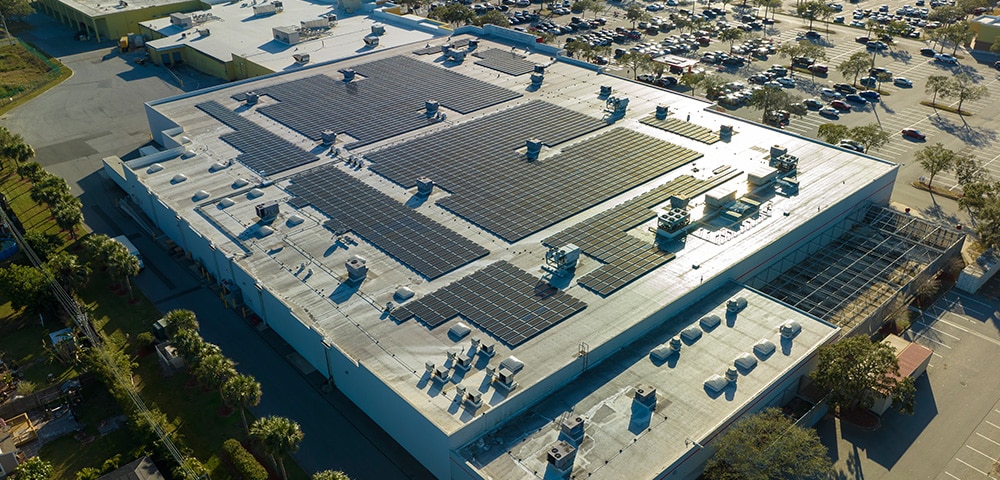Exploring debt tools for distributed generation and community solar

Distributed generation (DG) developments and renewable energy projects, like community solar, have historically faced challenges in securing financing. Limited capital availability and complex regulations have created steep barriers to DG investment, even with demand. In fact, many communities and businesses appear to believe it is nearly impossible to secure capital for these projects — but expert capital markets advisors are finding unique pathways to securing financing.
Tyler Nielsen, Director of KeyBanc Capital Markets’ Utilities, Power, and Renewables group, discussed the strategies for DG developers to secure debt financing during the Tax Equity & Debt Financing Accelerating DG Projects panel at the New Project Media DG Development & Finance Forum in New York.
Straight transfers create new opportunities, challenges
The Inflation Reduction Act (IRA) of 2022 not only created new federal clean energy tax credits but new ways to monetize them. Private and for-profit organizations can transfer clean energy credits in exchange for cash in what is now known as a straight transfer.
The IRA also created a system for people to transfer — or buy and sell — clean energy tax credits. Transferability has opened up the DG market, according to developers, who say that monetizing tax equity creates a safety net for projects. Nielsen agrees that transferability has been an asset for DG developers. “There is a universe of lenders who are willing to extend tax equity bridge loans prior to having the transfer papers signed,” he said.
But it is not that simple, Nielsen said. “The rub is the advance rate those lenders are offering on that tax equity bridge loan is far lower than what you would get if you actually had transfer documents signed or if you had a tax equity structure in place,” he explained. “That ends up leaving a hole in the capital stack, and that hole typically needs to be filled by equity.”
That might mean the developer has to put up more equity than it might have originally. Per Nielsen, “Not every developer has the ability to do that.” Luckily, some solutions exist using unique deal structuring.
Building scale through warehouse financing
Developers want and need more financing solutions. But to access ABS financing or private capital in addition to the bank market, developers need to build enough scale. Unfortunately, that is a challenge for most small developers.
Warehouse financing programs might be the solution. Putting a warehouse facility in place is becoming an increasingly popular way for developers to expand. On a community solar or DG project, that can be an important pathway to securing financing.
“The idea is to create a holding tank where you can construct projects and then house them for 18 months to 24 months with the intention of aggregating a sufficient size and spitting it out into an asset-backed security (ABS), a private placement, or other institutional type of product,” Nielsen said. However, “warehouse facilities are extraordinarily difficult and may not make sense for some developers.”
A successful warehouse deal requires the right advanced staging, Nielsen said. There are typically sub-limits in the warehouse, in which the developer must allocate certain parts of the warehouse to specific markets. If a developer is not watching closely, they can end up with the development overallocated in one area or market.
“We’ve actually seen a number of people who have set up warehouses that go largely unused because they can't meet the concentration limits,” Nielsen said. “These aren’t intended to be permanent capital vehicles, so lenders are very sensitive to making sure that those concentration limits are actually maintained.”
Diversity isn’t always better
In addition to scale, developers also say that diversity within a portfolio helps secure funding. However, this is not always the case.
Community solar and DG projects often do not have standardized contracts like those of residential solar contracts, so there can be significant variation among markets and properties. In this case, diversity actually works against the developer. “It gets difficult,” Nielsen said. “We have to do a lot of work upfront to standardize their forms of contract per market.”
For this reason, it can be easier for greenfield projects to secure funding because there isn’t an existing contract in place. So, the developer and lender can work together from the onset to create a standardized contract.
“If they have existing assets that already have signed contracts, you’re stuck with it,” Nielsen explained. “There is no easy solution to get around this due diligence issue.” It would be an industry game changer if contracts were standardized. “Once there is a template,” says Nielsen, “we can very quickly say yes.”
The opportunities to access capital for community solar and DG projects continue to grow, driven by innovative financing solutions and government support, including provisions under the IRA. While significant policy changes seem unlikely in the near term, working with a knowledgeable advisor can help you navigate the market and secure a successful DG development deal.
Learn more
For strategies to navigate utilities, power, and renewable energy solutions, contact one of our professionals or visit key.com/energy.